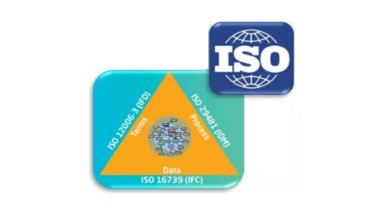Zigurat Global Institute of Technology
Blog / BIM & Construction Management
Successful applications of BIM in railway: Interview with Brazilian engineer Washington Luke
Categories

 | Washington Luke, Director of the Master's in Global BIM Management in Civil Engineering and GIS | Director of Engineering at Valec Engenharia, Construções e Ferrovias SA.| LinkedIn |
|---|
In this interview conducted by NT Expo, Luke gives examples and insights on how Building Information Modeling (BIM) is revolutionising the way railway projects are designed, constructed, and maintained.
Mr. Luke, can you share us examples of the successful use of BIM in railway projects?
Successful examples of the use of BIM in railways include the Garibaldi Station in Italy and the North West Rail Link Line in Australia. These two projects are indeed excellent examples of BIM implementation in railway stations, particularly for passenger transport. In many countries around the world, passenger rail transport is the most suitable option for long distances, and together with metro-bus integration, it is the best choice for large urban centres in terms of people's mobility. Other examples include the CROSSRAIL project in the UK, which started adopting BIM in 2007, but only became effective in 2019. It was successfully used in the railway project.  Crossrail is the first complete new underground line to be built for more than 30 years, it is the largest construction project in Europe and employs over 10,000 people across 40 sites. In Malaysia the mass rapid transit system in the city of Kuala Lumpur is a good example. This is Malaysia's largest infrastructure project, which began in 2011 and was scheduled for completion in 2021. The entire project, including a railway line that crosses a highly dense urban area with 35.5 km of track and 25 stations, was prepared on the BIM platform. Another interesting use of BIM around the world is the Korean project to build the Honam No. 4-2 high-speed rail lot, consisting of 6 bridges and two tunnels with a total length of 9.38 km. A BIM-based integrated construction management system was adopted to control the detailed cost and construction process. In Morocco, the company Colas Rail Maroc is designing and executing the route and basic works for the investment program to build 1,500 km of high-speed rail lines by 2035. Although there was no contractual obligation to integrate BIM into this project, the company responsible decided to model the railroad's electrical substation following the BIM process.
Crossrail is the first complete new underground line to be built for more than 30 years, it is the largest construction project in Europe and employs over 10,000 people across 40 sites. In Malaysia the mass rapid transit system in the city of Kuala Lumpur is a good example. This is Malaysia's largest infrastructure project, which began in 2011 and was scheduled for completion in 2021. The entire project, including a railway line that crosses a highly dense urban area with 35.5 km of track and 25 stations, was prepared on the BIM platform. Another interesting use of BIM around the world is the Korean project to build the Honam No. 4-2 high-speed rail lot, consisting of 6 bridges and two tunnels with a total length of 9.38 km. A BIM-based integrated construction management system was adopted to control the detailed cost and construction process. In Morocco, the company Colas Rail Maroc is designing and executing the route and basic works for the investment program to build 1,500 km of high-speed rail lines by 2035. Although there was no contractual obligation to integrate BIM into this project, the company responsible decided to model the railroad's electrical substation following the BIM process.
And what about the use of BIM specifically in Brazilian railways? Is it also advancing with good results?
The railroad operator Rumo Logística, which operates the FNS - North-South Railway in the Central and South Extension stretches, has advanced in the use of BIM methodology in railway projects with excellent results. CPTM - Companhia Paulista de Trens Metropolitanos is also making great strides in using BIM in its projects, given the importance of its network for urban mobility in the state of São Paulo. Finally, VALEC, as part of the Federal Administration, has been successfully using BIM methodology, especially with the integration of BIM and GIS - Geographic Information Systems in the management of expropriation processes of its areas and in environmental management processes. The company has implemented great innovative projects in the construction of the FIOL and FICO railroads, which are relevant to the Brazilian transport matrix.
Conclusion: BIM is propelling the railway sector towards the future
This interview conducted by NT Expo with Washington Luke provides evidence that many advances are occurring within the railway sector. Implementing BIM methodology in it is very promising, but it requires people with specialised knowledge capable of leading a multidisciplinary and dynamic team of professionals. ZIGURAT can help you on this path and enhance your professional career. With our International Master's in BIM Management for Infrastructure, Civil Engineering, and GIS, you can acquire all the knowledge and skills needed to be a reference leader in BIM project management in infrastructure. Look no further! Click the banner below for more information. 



